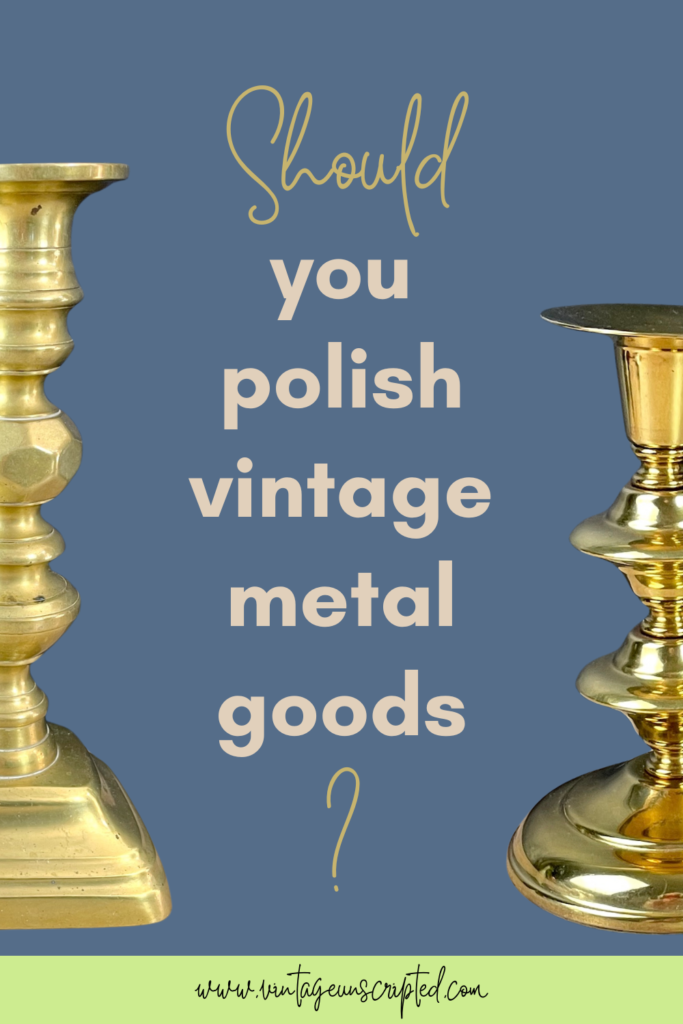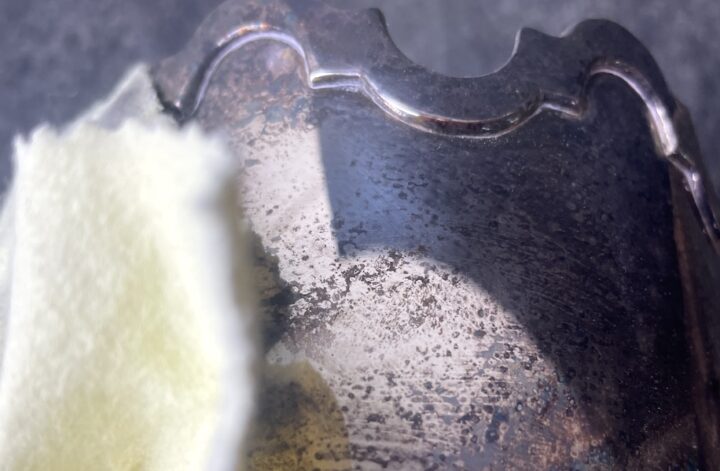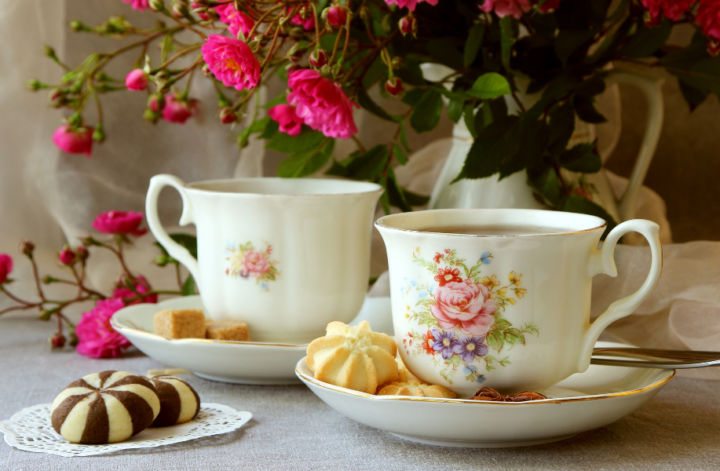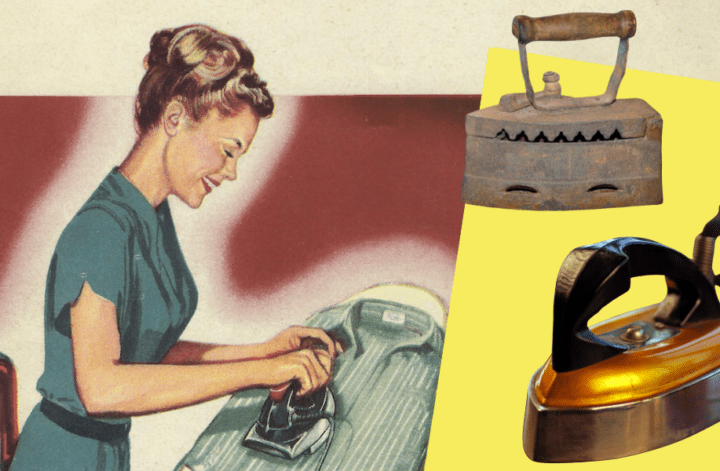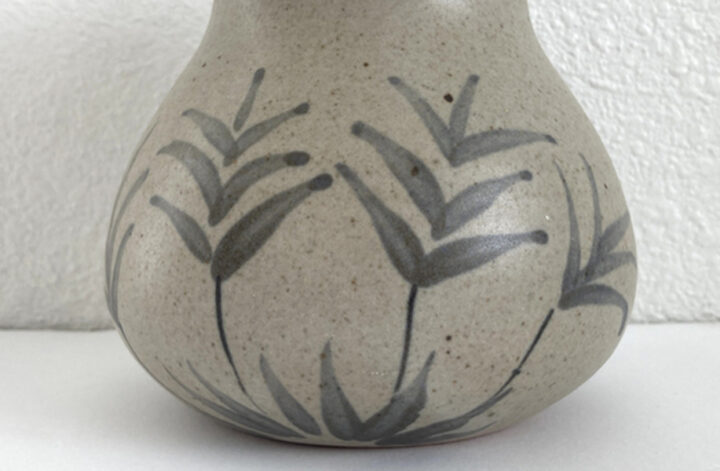When it comes to whether vintage metal pieces should or should not be polished, people have Opinions with a capital O. But since this is my blog post and I also have Opinions, I’m going to share my thoughts about whether you should polish vintage metal. And the answer is yes, no and it’s up to you. How’s that for decisive?
My actual Opinion is, it depends what kind of vintage metal stuff you are talking about polishing. Some things are a clear “NO, are you daft?” Others are a “YES, you must.” And there’s that third category, the MAYBES that depend on your preferences or the condition of the piece.
For your examination, some real life case studies…
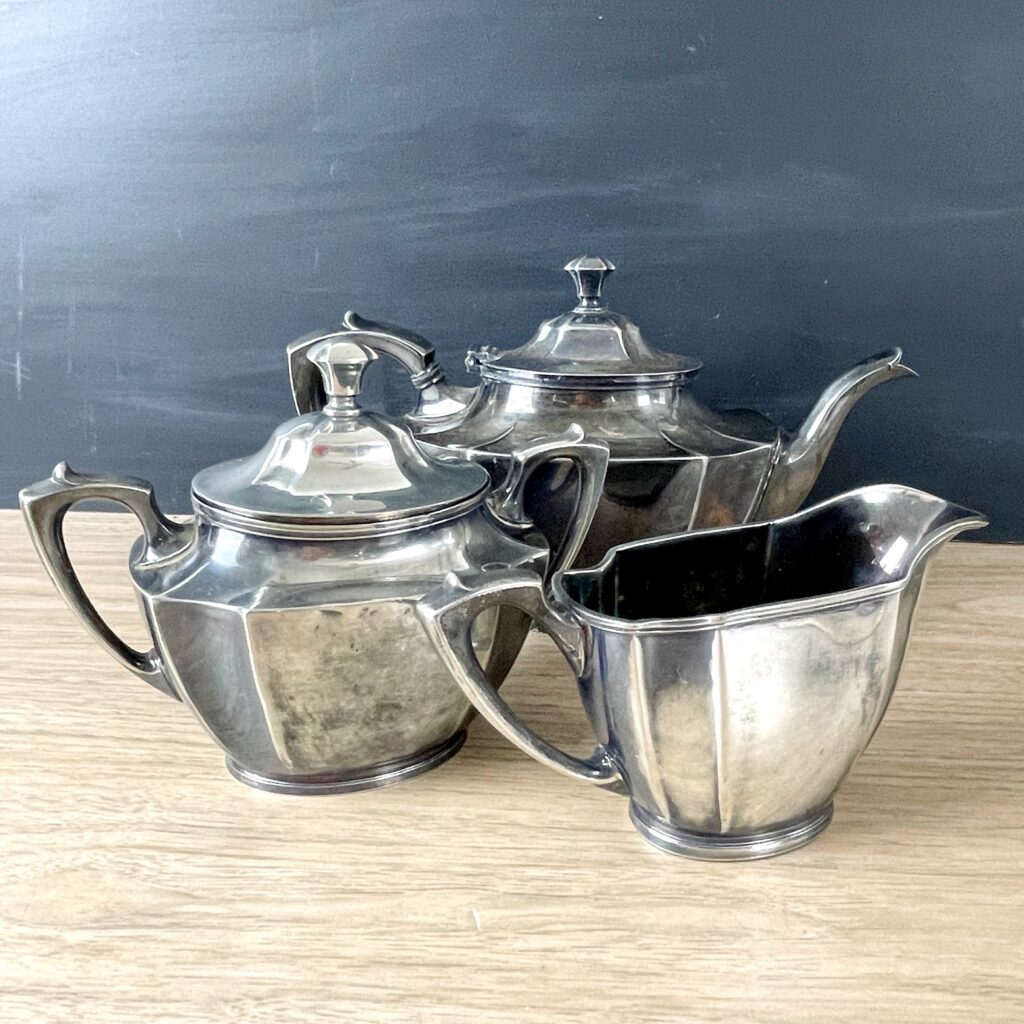
This antique silverplate tea set has a healthy coat of tarnish. If it was sterling silver, yes, polishing would improve its appearance and resale value for two reasons: it’s a high value item that likely would be used for actually serving tea and people want to see that the tarnish will actually polish off. That’s not common, and it mostly happens with silverplate, but sometimes you can’t get that shine back.
Since this is silverplate, it was left as found. Silverplate is often used for decor and for some, the tarnish is desirable. It took a few years for the pieces to get that tarnished, it would take a few years to get it back. Also, the tarnish is pretty attractive on these pieces. Sometimes tarnish is deep black with iridescence from the base metal underneath and not all that pretty.
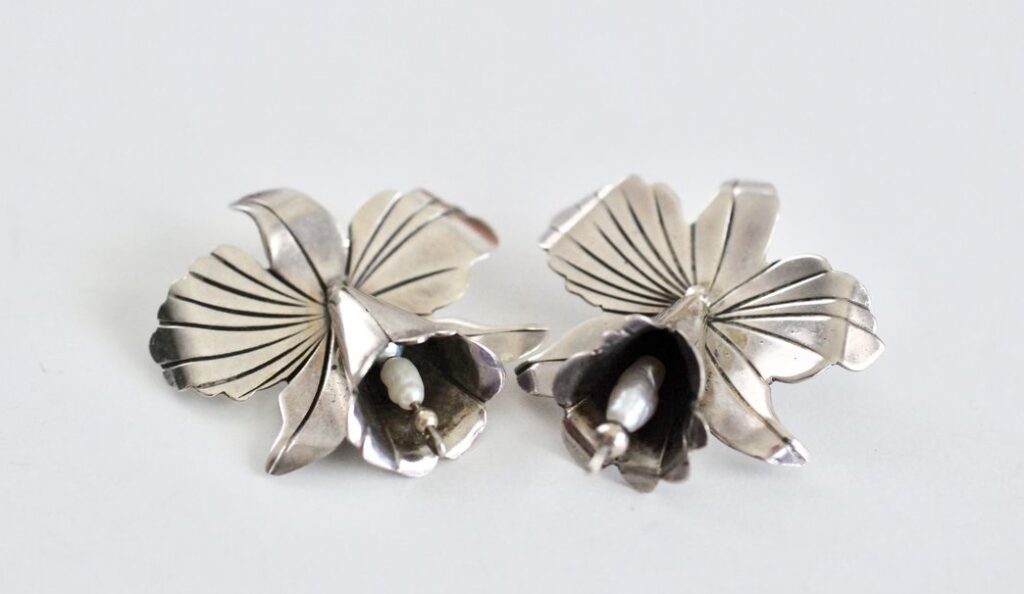
These gorgeous sterling silver earrings absolutely have to be polished. Jewelry is almost never has an improved appearance from tarnish, unless it’s oxidation that was put there by the maker. Look at that gleam.
TIP: Although sterling silver dips do a bang zoom job of polishing jewelry, don’t use them. They are nasty and the pieces will tarnish up again in the blink of an eye. A good quality polishing cloth will do a much better job and will be less damaging to the silver.
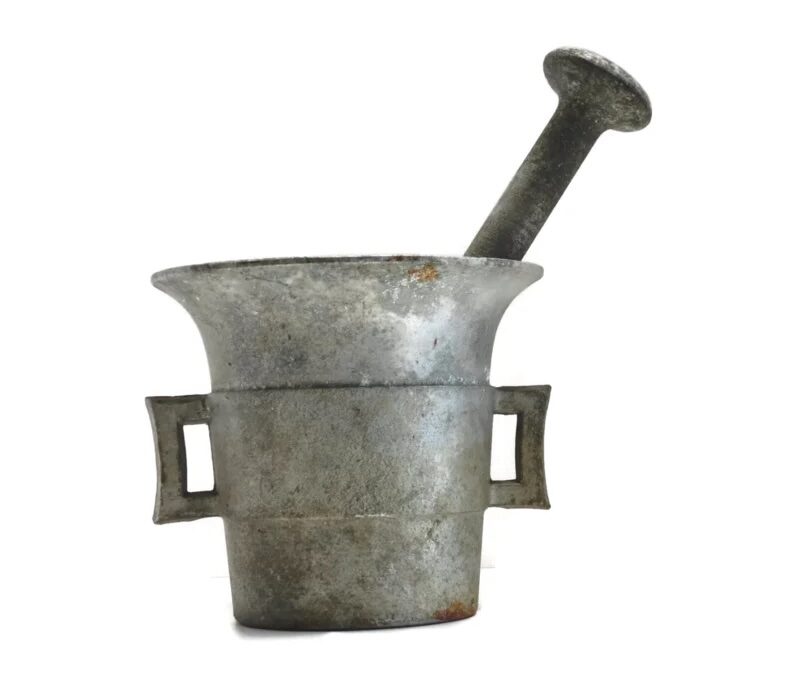
Some modern aluminum tableware pieces, like Arthur Court and Mariposa, can be highly polished and it looks good on them. But the charm of this vintage 1940s mortar and pestle is the patina. It could be polished. I would be willing to wager that Autosol would shine it up. But it would not be half as interesting with its history polished off it.
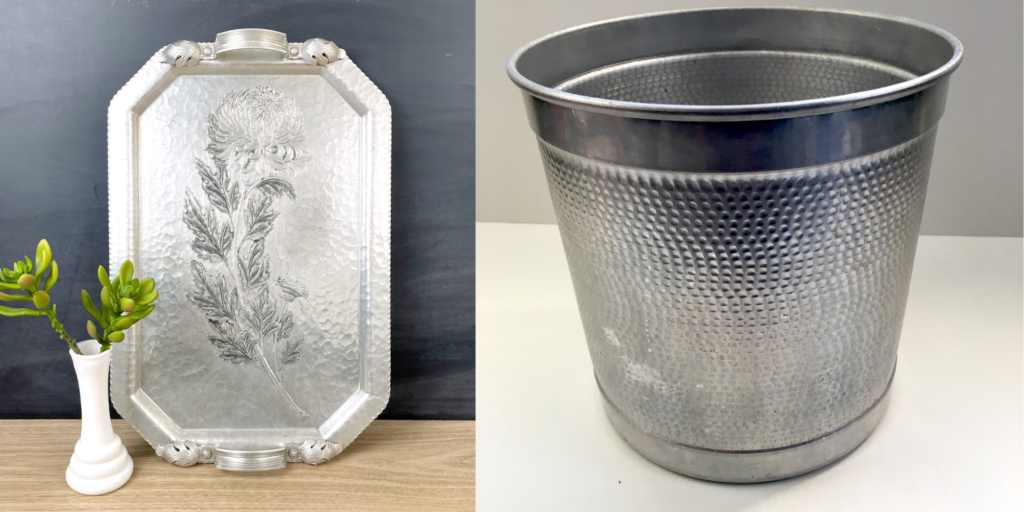
Whether or not to polish vintage metal becomes an if/then with 1950s and 1960s hammered aluminum serving pieces. For some reason, they don’t get much respect and are often relegated to the top of the fridge or the basement, meaning they can be grotty when brought into the light. Also they can have marks from something sitting on them for decades. Hammered aluminum pieces are not meant to be shiny, they are meant to have a soft matte finish, but when a good wash with Dawn dish detergent doesn’t clean them up enough, they need to be polished to be presentable. Autosol is a good choice for that task, but it’s aggressive so go slow and easy.
The aluminum wastebasket, on the other hand, is a modern design and would benefit from a polishing. It’s possible the mark on the lower left side would even out if the rest of the piece was brought to a shine.
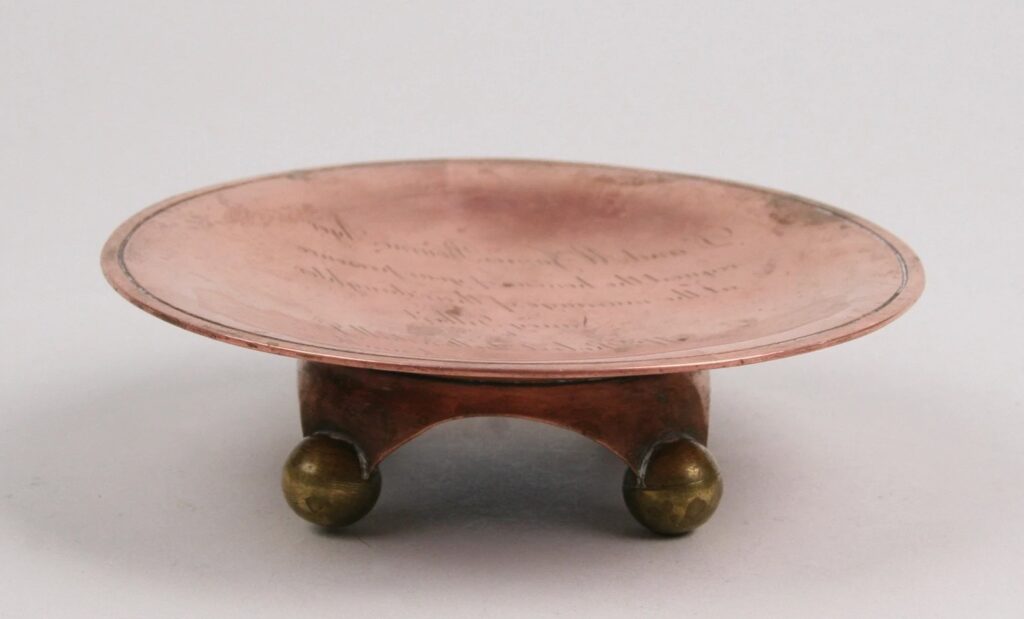
Whether or not to polish copper is very age dependent. Old copper has a smashing patina, hard won by age and time. Add in a little verdigris and, for some of us, it is [chef’s kiss]. This 1930s dish would absolutely be less charming if shined up.

On the other hand, the copper nested trays and the Haws watering can are a choose-your-own adventure when it comes to polishing. Filled with pebbles and plants, the trays would look good either way. The Haws watering can is bright copper when sold new. This one has a patina including verdigris that gives it a bohemian appeal. But whether or not to polish vintage metal is, in this case, not clear cut.
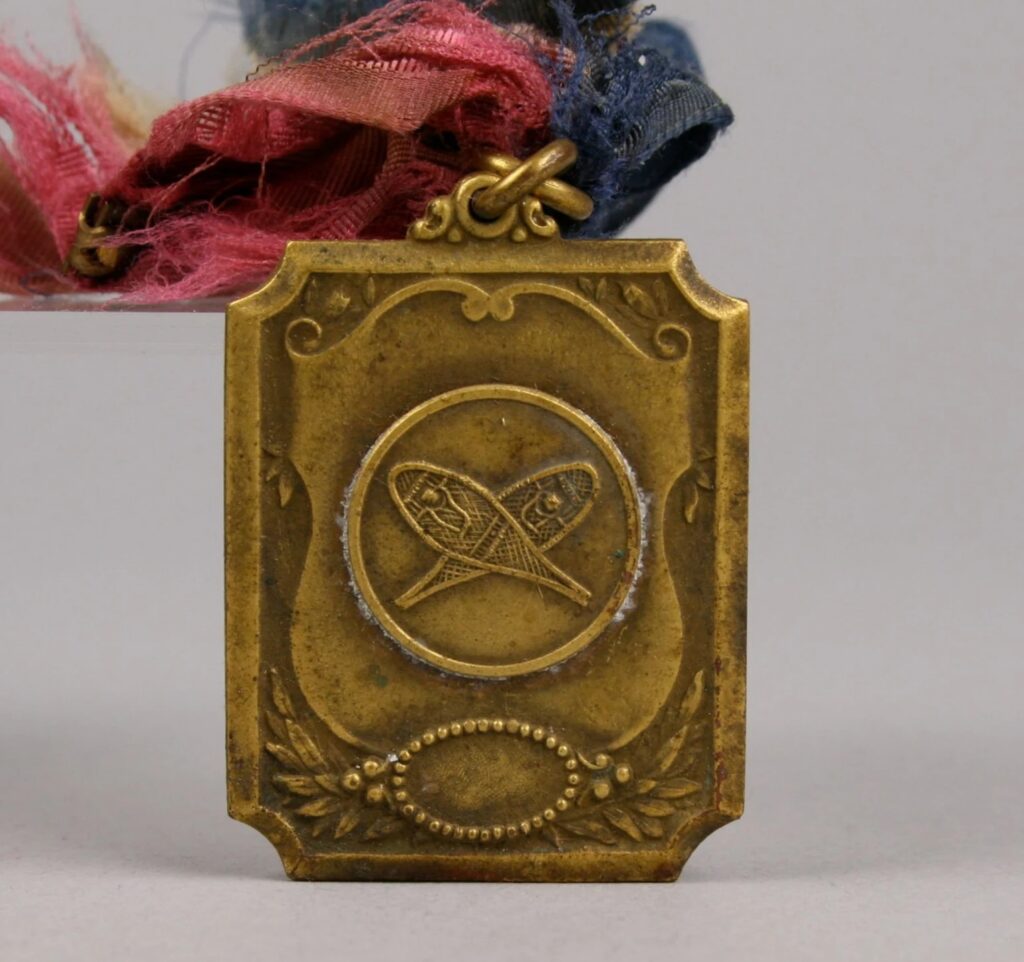
Brass is another metal where modern pieces look better polished and vintage pieces do not. This little brass athletic award pin would be the work of a minute to polish, but it would lose a lot of its visual definition. The patina helps all the details show.
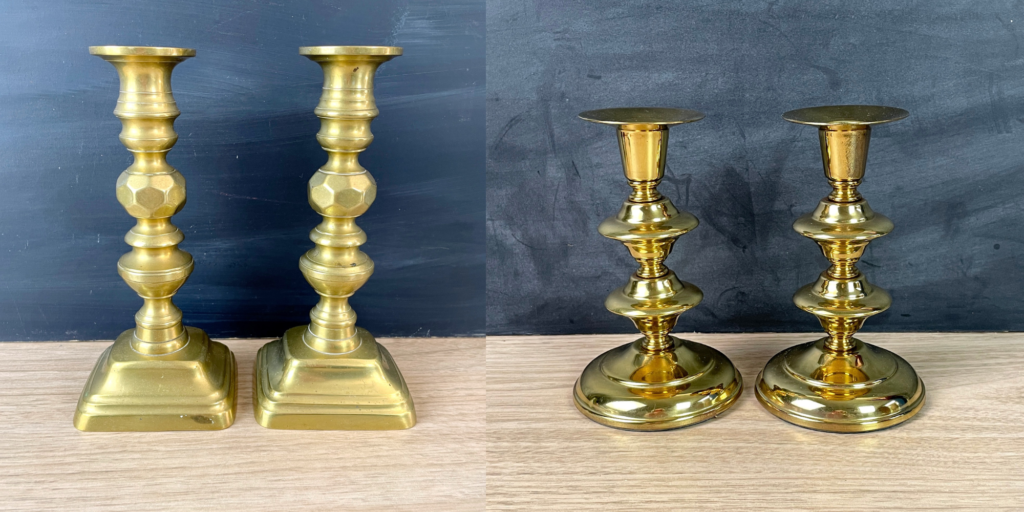
Old brass gets a warm soft patina. Unlike copper and silver, it doesn’t tarnish so much as it gets warm and gleams. The pair on the left would be sad if polished. Meanwhile the lacquered brass pair on the right are shiny but shouldn’t be polished as it would damage the protective lacquer finish. Occasionally moisture gets through the lacquered finish and the brass gets pitted. Consensus on the internet is that to fix the pitting, you need to remove the lacquer, sand it down and then polish. It sounds like a lot of work, but it would be worth it on a high value piece.
It wasn’t stated at the top, but none of these Opinions apply to an old antique piece or high-value piece. For those, don’t take advice from a heartfelt and well meaning vintage blog, consult an expert before you get out the polish.
So now you know my Opinions on polishing various metals. What are yours? Have you ever made a polishing mistake that you regretted? (Ask me sometime about when I used Cameo Copper polish, a cleaner meant for bringing the bottoms of copper clad pans back to shiny glory, on a vintage hand wrought copper tray. It involves a horrified gasp, profanity and a few angry tears of self recrimination.) Leave us your thoughts in the comments.
